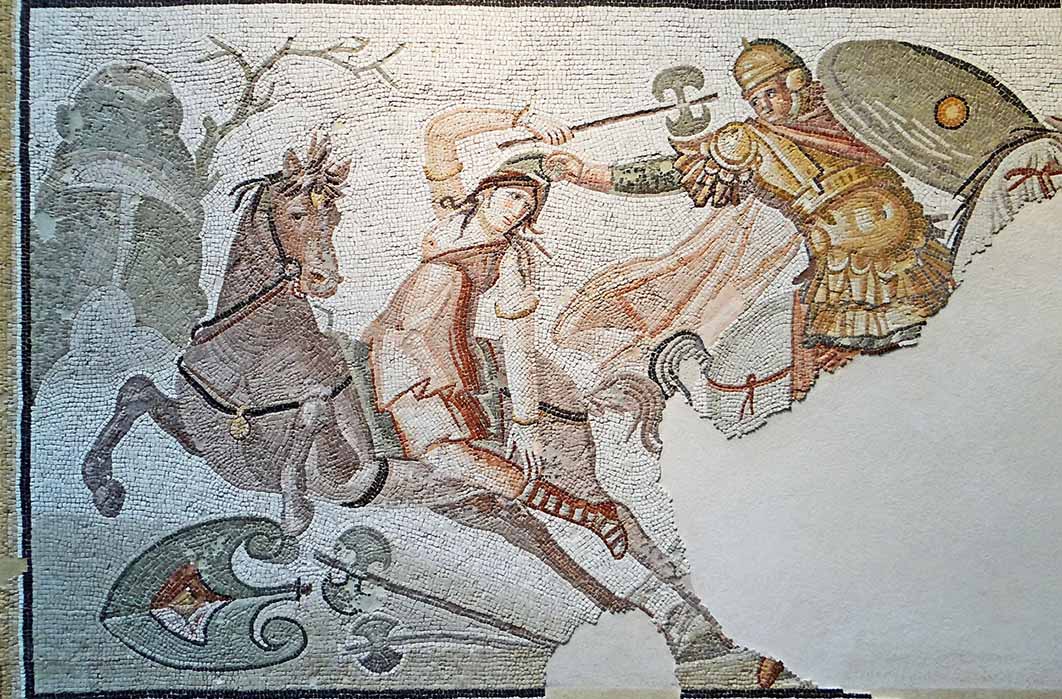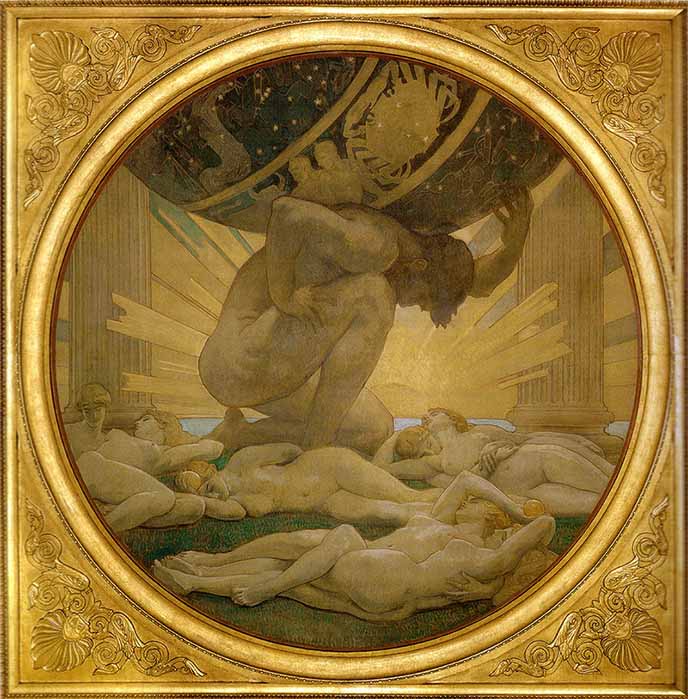
Amazon Myrina, Destroyer of Cerne, Conqueror of Atlantians – Myth Or Proto History?
Diodorus Siculus’ Library of History is a mine of information about the ancient world, its peoples, histories, legends, and myths. Most interesting in Book 3. 52. is the narration of the myth of Myrina, an Amazon Queen, who conquered a city in the marsh Tritonis, called Cherronesus. Setting out from the city of Cherronesus, the first people against whom the Amazons advanced were the Atlantians. Diodorus, who lived around 80-20 BC, drew his story from the works of an earlier writer called Dionysus Skytobrachion, variously identified as Dionysus of Mytilene or Miletus. Unfortunately, except for the excerpts in Diodorus, none of his works have survived.

Diodorus Siculus as depicted in a 19th-century fresco (Public Domain)
Geographical Backdrop of the Myth
At first sight this narrative is so fantastical and has seemingly no bearing on anything told elsewhere about the Amazons from other extant sources, that hitherto the response has been to discard it totally as being a mere fabrication by a late mythographer with no bearing whatsoever upon reality. Consensus on clues given as to the possible geographical location of the narrative is that it was set in the western parts of ‘Libya’, on the bounds of the inhabited world; the city was located on an island called Hespera (meaning in the west), set in a marsh called Tritonis, near the ocean which surrounds the earth and named after a river Triton which fed it. The location of the marsh was near Ethiopia and “that mountain by the shore of the ocean which is called by the Greeks Atlas”. The Amazons subdued all cities on the island except one: Mene which considered sacred and inhabited by Ethiopian ichthyophagi (fish eaters). The island/city was subjected to great eruptions of fire and it possessed a multitude of precious stones. Setting out from the city of Cherronesus, the first people against whom they advanced were the Atlantians, the most civilised people, who were prosperous and possessed great cities; the birth of the gods was placed in these regions that lie along the shore of the ocean. On entering the land of the Atlantians they defeated the inhabitants of Cerne and razed the city to the ground. Amazon Queen Myrina founded a city that bore her name in place of the razed city and settled both captives and natives who so desired to settle there.
The Atlantians were often warred on by the Gorgons, a folk who resided on their borders. Amazon Mounds were raised in memory of fallen in battles against Gorgons. The Gorgons were later subdued by Perseus and both the Amazons and Gorgons were entirely destroyed by Heracles when he visited the regions of the West and set up his pillars in ‘Libya’. Eventually the marshland Tritonis disappeared from sight in the course of an earthquake, when those parts of it, which lay towards the ocean, were torn asunder.

Atlas and the Hesperides, by John Singer Sargent (1925) (Public Domain)
Contesting the Consensus
The seeming contradiction in the text of Ethiopia being next to Libya should itself determine that the text is referring to an entirely different location than the one currently conjured, as in the west. Even though Pliny (AD 23/24 – AD 79) informs, based upon a report of Polybius, (Book 6.36.): “That (the island of) Cerne lies at the extremity of Mauritania, over against Mount Atlas, a mile from the coast... There is also reported to be another island off Mount Atlas, itself called Atlantis, from which a two days-voyage along the coast reaches the desert district in the neighbourhood of the Western Ethiopians... Opposite the cape are also there reported to be some islands, the Gorgades, which were formerly the habitation of the Gorgons... These island were reached by the Carthaginian general Hanno, who reported that the women had hair all over their bodies, but that the men were swift of foot and got away; and he deposited the skins of two of the female natives in the Temple of Juno as proof of the truth of his story and as curiosities... Outside the Gorgades there are also said to be two Islands called the Hesperides.”
Anyone who believes this area to be the actual location of the Gorgons, Amazons and Atlantians is, like those who believe Hanno’s tale of hairy female natives, misguided. Pliny goes on to say: “The whole of the geography of this neighbourhood is so uncertain.”
- Asia Minor: Atlantis, Asteroids And The Birth Of Athena
- IWNW The Egyptian Atlantis, City of Yah Weh and Ra
- The Amazons: The Real Female Fighters Dispelling Myth & Legend
Certainly by Pliny’s time these areas did bear these names, but for very obvious reasons. The discoverers named them after the places they were familiar with; in much the same way as say Christopher Columbus named many of the islands in the Caribbean. Nobody now would dream of locating Spain in the Caribbean on the basis of his having called one of the islands there Hispaniola. Surely if the heroes of Greek mythology wanted to plunder, loot, rape, or pillage they had many opportunities far closer to home. What this is in fact is a classic case of location displacement, a thing which is very common in the Greek myths, aspects of which have been well explained by Peter James in the Sunken Kingdom.




